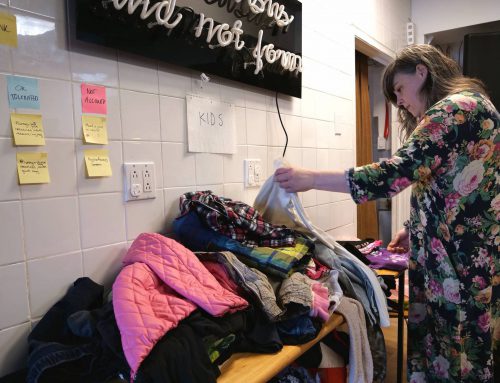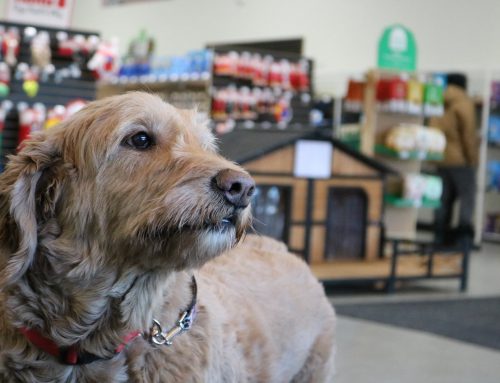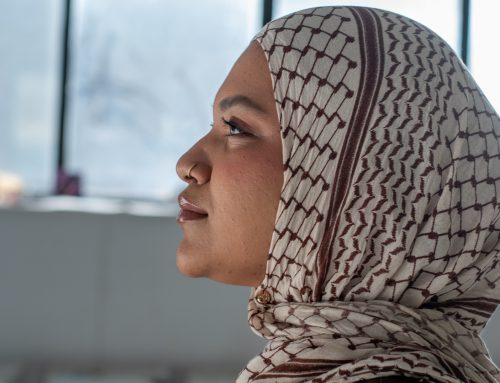BY Cedric Gallant & Maggy McDonald
“Everybody told me it’d be almost impossible. Well guess what, I found over 200 names of missing and murdered Indigenous women.”
At a vigil held on Valentine’s day, Janis Qavanauq-Bibeau revealed the purpose of the Iskweu project to a crowd that followed her chants through the streets of Montreal.
The Iskweu project is a research initiative created by the Native Women’s Shelter of Montreal (NWSM). Its goal is “eradicating the number of missing and murdered Indigenous women and girls (trans, two-spirit) of Quebec.”
In 2019, the National Inquiry into Missing and Murdered Indigenous Women and Girls said that the RCMP reported 46 cases between 1980 and 2012.
“That does not sound right, this country was built on genocide, the number does not make any sense,” says Qavanauq-Bibeau, the research coordinator for Iskweu. “When Cédrika Provencher went missing, we talked about it for years and years, people never abandoned hope. But when it comes to Indigenous people, we talk about it in a quick news story at six.”
In her emotional speech to a crowd holding candles near their chests, she says, “When Indigenous women pass away, it is ruled quickly as a suicide or an overdose. When I asked for my mom’s coroner report, the first sentence on it said that the person is obese and unclean. That was my mom. She was the best, and she is not here today.”
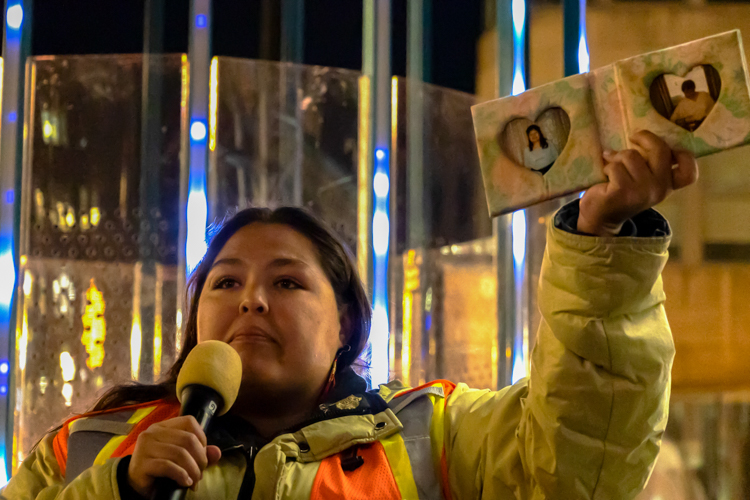
Janis Qavanauq-Bibeau shows pictures of her mother during her speech at the Vigil for MMIWGT2S, on February 14. Photo by Léa Beaulieu-Kratchanov.
The Iskweu project is not building the database alone. Two partners work in tandem with the Iskweu team to create a more comprehensive portrayal of MMIWGT2S in Quebec: The Université du Québec en Outaouais (UQO) and Quebec Native Women (QNW), and all three play a specific role in the research process.
Before the database project was created, Social Sciences teacher at UQO Audrey Rousseau was running a project on a smaller scale. She was researching in the Anishinaabe communities of Abitibi-Témiscamingue, but she knew that the data collection should not be kept to one region alone.
“Indigenous women are five times more likely to be victims of homicide,” she says. “When we see the tendency of femicides in Quebec, there is nothing to be happy about here.”
This knowledge alone is what pushed her to collaborate with the team.
“I could not tackle this alone,” she says.
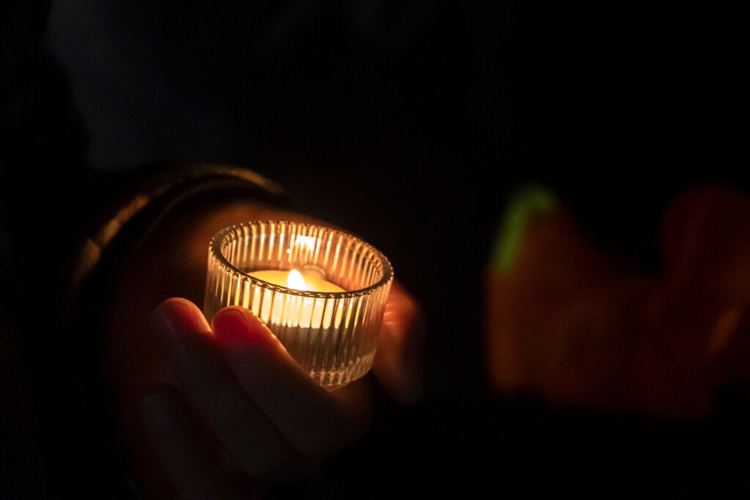
A participant of the Vigil for MMIWGT2S on February 14 holds a candle near their chest. Photo by Léa Beaulieu-Kratchanov.
Rousseau’s team has been able to collect data from Statistics Canada, Sûreté du Québec (SQ), the province’sCoroner’s office, and the Ministère de la Justice du Québec. Ultimately, the results will be organized into an interactive map. The goal is to make cases of missing and murdered Indigenous women and girls between 1980 and 2019 visible and available for everyone to consult.
In her research, Rousseau found many problems within Royal Canadian Mounted Police (RCMP) and SQ’s identification protocols.
“It’s the police officer that checks a box, either Indigenous or Not-Indigenous,” she says. According to her, sometimes they base their identification process only on what the person looks like. “It makes it extremely random,” she adds.
“I am being told constantly that improvements are to come,” says Rousseau. “But it doesn’t stop us from looking at the data we have now, and seeing what information is missing.”
This is where the Iskweu project and QNW come into play. Both research teams are led by Indigenous women, and will take a qualitative approach to data gathering, focusing on experiences over data.
Director of Montreal’s Native Women Shelter Na’kuset says that the Iskweu project’s initial purpose was to work with Montreal police (SPVM) to improve relationships between police forces and the families of MMIWGT2S victims back in 2016. Afterwards, a research component was added, where the aim is to figure out just how many cases of missing and murdered women there are in the province.
A map of the recorded cases of MMIWGT2S on the island of Montreal, as recorded by the Native Women’s Association of Canada’s Safe Passage initiative.Map/Quiz/etc by Cedric Gallant.
When completed, the goal is to have that database be available to all.
“When you tie in to other powerful organizations that are working together, bringing experts and making the numbers legitimate,” says Na’kuset. “We want the schools, universities, and media to have access to it on an updated website.”
Some Indigenous Women, Girls, Transgender and Two-Spirited find empowerment in telling their stories through art. Video by Maggy McDonald.
A Canada-wide initiative called Safe Passages, led by the Native Women’s Association of Canada (NWAC), is building a similar interactive map. They provide a heat map that points out where cases of MMIWGT2S frequently happen. They also provide a community centre map that shows resources for Indigenous women, such as shelters, housing, mental health services and cultural programming.
However, the data presented on the Safe Passages website amounts to the figures that were made available by the Sureté du Québec. In Quebec, only 46 cases appear, and in total 1,300 cases are displayed Canada-wide.
Matriarch-in-training of the Wilp Lax’giik Bayt Neekh and Senior Director of Social Development at NWAC, Geraldine Trimble says that databases should be “survivor centered, and trauma informed.” She adds that “the data that is collected must come from Indigenous women.”
“What can a mother or an aunt tell another mother or aunt on what to do? What education can a survivor of a situation give to others?”
In grassroots-collected data, more than just murder and missing cases can be collected. Trimble names them “Non-Suspicious cases.” This entails all the unsafe experiences that Indigenous women face, like cyber-stalking. Safe Passage will be attempting to collect those unsafe experiences by creating a reporting portion to the website.
Their goal is to create a community and a resource hub for Indigenous women.
“What can a mother or an aunt tell another mother or aunt on what to do,” says Trimble. “What education can a survivor of a situation give to others?”
They collect that information to make Indigenous women, girls, transgendered, gender diverse and two-spirited people safer.
“There is so much misunderstanding about Indigenous people in this country,” she says. “There is so much misunderstanding about genocide, about being an impoverished and marginalized nation, to be dispossessed of our lands.”
In 2019, the National Inquiry on Missing and Murdered Indigenous Women and Girls put out 231 calls to action for Canada, with a specific report made for the province of Quebec.
“To date, there has been little to no response on any of those actions at any level,” says Trimble.
This map shows all the available community resources for Indigenous people on the island of Montreal. Map by Cedric Gallant.


